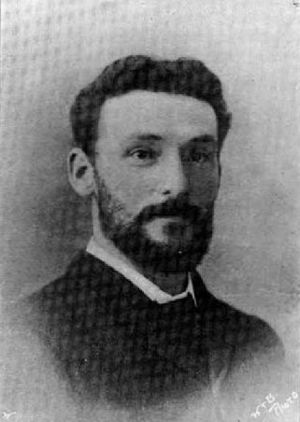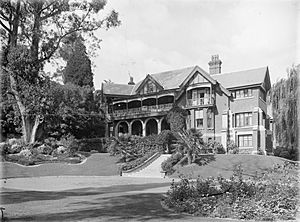George John Smith facts for kids
Quick facts for kids
George John Smith
|
|
|---|---|

George John Smith
|
|
| Member of Parliament for City of Christchurch |
|
| In office 1893–1899 |
|
| Preceded by | Ebenezer Sandford |
| Succeeded by | Harry Ell |
| In office 1901–1902 |
|
| Preceded by | Charles Lewis |
| Succeeded by | Thomas Davey |
| Personal details | |
| Born | 1862 Consett |
| Died | 1946 |
| Political party | Independent |
| Spouse | married 1887 to the only daughter of the late Mr. R. Dawsson |
Colonel George John Smith (1862–1946) was an important person in New Zealand politics. He was a Member of Parliament for the City of Christchurch area. Later, he also served in the Legislative Council, which was another part of the government.
Early Life and Work
George John Smith was born in a place called Consett in England in 1862. He went to school at the Wesleyan Church School in Newcastle upon Tyne. After finishing school, he started working for government lawyers.
In 1879, when he was about 17, he moved to New Zealand. He became a lawyer and a businessman in Christchurch. He also served as a councillor on the Sydenham Borough Council. George Smith strongly believed that alcohol sales should be stopped. Because of his strong views, he faced some challenges when he was part of the Sydenham Licensing Committee in 1891.
Serving in Parliament
| New Zealand Parliament | ||||
| Years | Term | Electorate | Party | |
| 1893–1896 | 12th | Christchurch | Independent | |
| 1896–1899 | 13th | Christchurch | Independent | |
| 1901–1902 | 14th | Christchurch | Independent Liberal | |
George John Smith decided to run for parliament. In the 1893 election, he was elected as a Member of Parliament (MP) for the City of Christchurch. An MP is someone who represents the people of their area in the country's main law-making body, the House of Representatives.
He was re-elected in 1896. However, he lost his seat in the 1899 election. But he returned to parliament in 1901 after a special election. He was an Independent MP, meaning he didn't belong to a specific political party throughout his time in parliament.
In 1918, he received a special award called the Commander of the Order of the British Empire (CBE). This award recognizes people for their important contributions.
The Legislative Council
In 1907, George Smith was appointed to the New Zealand Legislative Council. This was another important part of the government, similar to a second house of parliament. He served there from 1907 to 1914, and again from 1920 to 1932.
Other Contributions
In 1905, George Smith bought a large property in Christchurch called Riverlaw. It was a beautiful home located near the Ōpāwaho / Heathcote River. He made the house even bigger by adding a third floor. After he passed away, Riverlaw was used by the YWCA, an organization that helps young women.
Riverlaw House was considered one of the best old homes in Christchurch. Sadly, it was badly damaged in the 2011 Christchurch earthquake and had to be taken down.
George Smith was also very involved with Canterbury College (now the University of Canterbury). He was a member of their Board of Governors for many years, from 1903 to 1907, 1913 to 1917, and 1920 to 1946. He even served as the Chairman of the Board from 1928 to 1932.
In 1935, he received another award, the King George V Silver Jubilee Medal. This medal celebrated the 25th year of King George V's reign.


